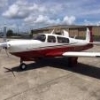The Effects of Advanced Timing?
-
Members Online
- Vance Harral
- PprophetBirdman
- marcusku
- hais
- PT20J
- EarthX Inc
- Paul Thomas
- Dick Denenny
- LANCECASPER
- richardbrochu27
- DXB
- Greg Ellis
- rbmaze
- N204TA
- Ethan
- takair
- EricJ
- DesertNomad
- Slick Nick
- Patrick Horan
- Graf_Aviator
- N201MKTurbo
- BlueSky247
- Brandt
- mmcdaniel33
- 47U
- TNIndy
- KSMooniac
- slowflyin
- PeterRus
- Emmet
- Wingfree
- MatthiasArnold
- DanM20C
- Rmnpilot
- Fritz1
- 00-Negative
- Niko182
- Max Clark
- hammdo
- Jakes Simmons


Recommended Posts
Join the conversation
You can post now and register later. If you have an account, sign in now to post with your account.